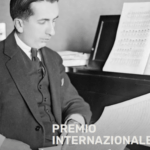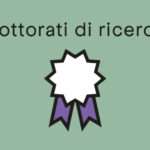10 Feb The Sounds of the Beyond: The Mysteries of Ancient Greek and Roman Music (Strasburgo, 29 Giugno-1 Luglio, 2020)
Although the etymology of mystêrion is not entirely clear, scholars have traditionally thought it to be derived from the Greek μύω, meaning “to close” or “to shut.” The word may thus refer to shutting not only the eyes (during the initiation ritual), but also the mouth, since initiates were not allowed to reveal what happened in the ritual. Nevertheless, the mysteries were probably not as esoteric as scholars have thought (see R. Turcan and W. Burkert).
While scholars have, in the past, treated a variety of cults as mysteries, nowadays they operate with a stricter definition of the term. “Mysteries” designate, first, ancient Greek mysteries (the Eleusinian, the Dionysian and the Orphic-Bacchic Mysteries) and, secondly, new mystery cults worshipping divinities that Greeks and Romans adopted gradually from other cultures (Cybele, Isis and Mithra). Mysteries supplemented civil religion rather than competed with it: they had the same goal of creating an individual relationship to deities through votive offerings. Any individual could easily observe the rites of the state religion, be an initiate in one or more mysteries (whatever her/his status might be), and at the same time adhere to a certain philosophical school.
A variety of inscriptions, inscribed instruments, ritual objects, iconographic representations, and texts all attest to the importance of music and sound in mysteries. For instance, the rattling noises in the cults of Dionysos and Cybele were imbued with magical and protective qualities. The archaeological remains of a mithraeum in Strasbourg (Koenigshoffen – the very site of our conference) give an opportunity to reflect more precisely on the sounds heard in Mithraic mysteries, in which initiates imitated the cries of ravens and the roaring of lions. The representation of a sistrum on a mosaic in the mithraeum in Ostia suggests that there were sonic connections between the mysteries of Isis and Mithra.
The recent discoveries of golden tablets related to the Orphic mysteries shed new light on those rituals and their conception of the afterlife. The connection of the tablets with Pythagoreanism should be explored, since both try to understand the secrets of the universe. The theory of the harmony of the spheres is a way to decipher the sounds of the beyond, the inaudible music that rules the kosmos. Gaudentius made this clear at the very beginning of his Introduction to Harmonics by quoting a famous Orphic statement: “I sing for the intelligent; uninitiated, close the door!”
Since there has never been any full enquiry into the soundscape of mysteries, there is need for close examination of this rich material. A variety of questions arise, in particular:
– what role did music and sound play in the ritual for a new initiate?
– what role did initiates attribute to music and sound in the afterlife?
– how do we access a sound that was supposed to remain secret to all but the initiates?
– what does the corpus of Orphic Hymns contribute to our understanding of the soundscape of the mysteries?
– how does music theory try to explain the secrets of the universe?
– how has the music of mysteries been re-imagined by modern composers (e.g. Mozart’s Magic Flute (1792), G. S. Mayr’s I misteri eleusini (1802) and Y. Markopoulos’ Liturgy of Orpheus (1994))?
As always, a session will be devoted to new finds or new studies of ancient finds.
Proposals of less than 300 words for 20-minute papers are invited. Conference language: English
Proposals should be sent to sylvain.perrot@unistra.fr by February 29th, 2020, and will be evaluated by the Scientific Committee by March 30th, 2020. Applicants whose abstracts are accepted will be notified immediately afterwards by email and asked to confirm their participation by April 10th, 2020.
Only MOISA members are eligible to present a paper. It is possible to join the Society at http://www.moisasociety.org.
Scientific committee
Daniela Castaldo (Università del Salento – Italy)
Alexandra Goulaki-Voutyra (Aristotle University Thessaloniki – Greece) Stefan Hagel (Österreichische Akademie der Wissenschaften – Austria) Athena Katsanevaki (Aristotle University Thessaloniki – Greece) Angelo Meriani (Università di Salerno – Italy)
Timothy Moore (Washington University in Saint Louis – USA)
Sylvain Perrot (Centre National de la Recherche Scientifique – France) Donatella Restani (Università di Bologna ‘Alma Mater’ – Italy)
Antonia Roumpi (Aristotle University Thessaloniki – Greece)
Fabio Vergara Cerqueira (Universidade Federal de Pelotas – Brasil)









